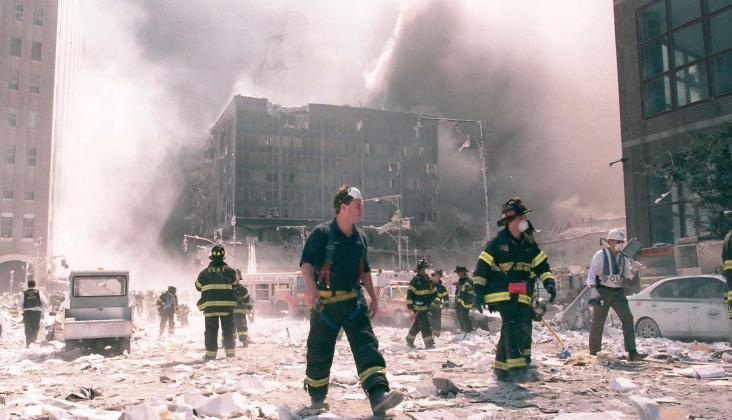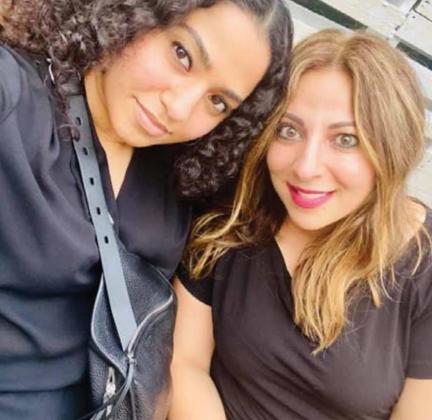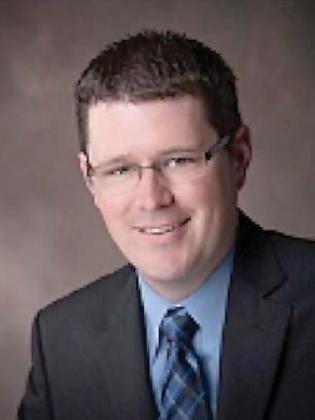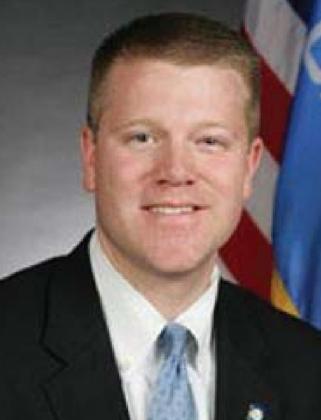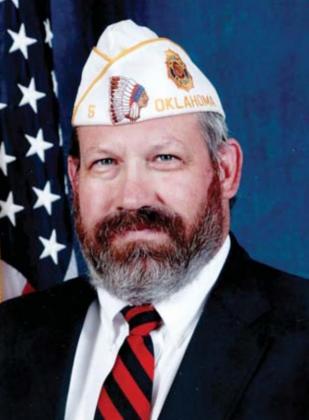EYEWITNESSES TO HISTORY
20 years later, local memories of 9-11 attacks haven’t faded
It was a brazen attack that changed an entire nation, undermining our sense of security while strengthening our resolve that it would never happen again. But for some, events of that day hit even closer to home.
Just hours before the deadliest enemy attack on U.S. soil and the deadliest terrorist attack in world history, Sept. 11, 2001, dawned bright and clear in New York City and Washington, D.C.
At 7:59 and 8:14 a.m., respectively, American Airlines Flight 11 and United Airlines Flight 175, took off from Logan Airport in Boston, both bound for Los Angeles.
Minutes later, two other commercial flights took to the air – American Airlines Flight 77 from Washington, D.C., at 8:20 a.m., and United Airlines Flight 93 from Newark, N.J., at 8:42 a.m.
The sequence of events that followed not only shook the nation to its core, claiming more lives than were lost in Pearl Harbor, but also triggered a 20-year war on terror that claimed thousands more during fighting in Afghanistan and Iraq.
Most people in Kingfisher County and around the country were glued to their TVs as the horrific events unfolded, but some people with local ties were even closer to the action and agreed to share their memories with the Times and Free Press.
8:42 a.m. Flight 11 crashed into the north face of the North Tower of the World Trade Center, between floors 93 and 99.
Former Kingfisher resident Rashmi Saini was on a commuter train crossing the Manhattan Bridge from Brooklyn to Manhattan where she worked as an optician when the plane hit.
She had moved from Kingfisher to New York in 1988 with her mother Podma when she was a high school sophomore and her twin younger sisters, Debra and Diane, were in junior high.
Saini was wearing headphones and listening to a radio station on her Walkman when the D.J. announced that what appeared to be a commuter plane had crashed into the World Trade Center.
“I thought, ‘wait a minute, what is he talking about?’ Then I looked out the window and thought, ‘oh my God, the building is on fire!’” Saini recounted last week. “I was in shock and just freaked out.”
With his 12-year career in state government still years away, Kingfisher High School graduate Mike Sanders was working as director of White House interns for President George Bush and had arrived at his office on the first floor of the Old Executive Office Building about 7:30 a.m.
He turned on the office TV and started the coffee as his three other office mates began to arrive.
“I saw the news ticker at the bottom of the screen that said a small commuter plane had crashed into one of the twin towers,” he said. “Like everyone else, I thought it was a freak accident. Maybe the pilot had a stroke or some other health incident and crashed.
“But when they showed the burning building, it was a decent sized hole. I remember thinking it had to have been a bigger plane, maybe a twin turbo.
“But not a jetliner. No one was thinking about a commercial plane at first.”
Air Force Tech Sgt. Sam McPherson, another KHS graduate, was assigned to the Joint Staff Military Security Force at the Pentagon, a team which provides round the clock security to the Joint Staff area, as well as ceremonial functions for the chairman and vice chairman of the Joint Chiefs of Staff.
The Military Security Force rotates yearly between the Army, Air Force and Marines and on Sept. 11, McPherson and the rest of the Air Force crew were just settling into the second month of their assignment.
“Shortly after 9 a.m., one of my troops came in and said an airplane hit the World Trade Center,” he said. “We quickly turned on the TV and watched reports of what everyone believed was a horrific accident.”
One of Sanders’ 100 or so interns was KHS grad and Oklahoma State University student Jared Harrison, who was on his way to work when the first plane hit.
He didn’t hear the news until he arrived at the correspondence office on the first floor of the Old Executive Office Building, where a TV was turned on.
Meanwhile, Sanders and his officemates, along with most of America, remained glued to the TV and then watched in horror and confusion as what looked at first like a flyspeck on the horizon of the Manhattan skyline grew larger and larger.
9:03 a.m. Flight 175 crashed into the south face of the South Tower of the World Trade Center, between floors 77 and 85.
“I thought ‘oh, my God, we’re under attack.’ That’s what instinctively came out of my mouth,” Sanders said.
One of Sanders’ officemates tried to call their supervisor in the West Wing of the White House to see what was going on.
“It’s the White House – they have people manning the phones 24-7,” Sanders said. “My coworker called and got no answer. I called a few minutes later. Still no answer.
“We call, we wait, we call again, still no answer.
“We didn’t know at the time, but the Vice President had already been taken to the underground bunker.”
President Bush, who was reading to a group of second graders at a Sarasota, Fla. elementary school at the time of the first two plane crashes, broadcast his first message to the nation from the school before he was whisked away on Air Force One.
Still on her commuter train and numb with shock, Saini was still trying to process what she was hearing and seeing after the second plane crashed when she heard a fellow passenger cry out: “Oh, my God, my brother works there!”
That brought Saini back out of her reverie with a chilling realization: Both of her sisters also worked in the World Trade Center.
By that time, Saini’s train had arrived in Manhattan and she got off at Canal Street and immediately started walking in the direction of the billowing pillars of smoke.
“It was getting more and more chaotic, the further I walked, and finally a cop said it was too dangerous and told me to go back where I was coming from,” she said.
Back at the Pentagon, McPherson and other members of his crew were also watching events un fold on TV.
“Shortly after 9 a.m., we watched the second plane hit the second tower and realized then that this was no accident,” McPherson said.
“A little after 9:35 a.m., we heard what sounded like a bowling ball hitting a concrete floor. There is always construction going on at the Pentagon and we assumed it was more of the same.
“Then a message came over the Defense Protective Service (Pentagon Police) radio net.”
9:37 a.m. Flight 77 crashed into the western side of the Pentagon
As his team sprang into action to sweep the Joint Staff area for security threats, McPherson started down a checklist that began with a call to the Emergency Actions line to the National Military Command Center.
“The duty sergeant answered and I said ‘This is Sgt. McPherson with the Military Security Force. We were just notified via DPS radio net that an airplane hit the westside of the Pentagon. We have no further information at this time, but in light of this morning’s events, we thought you should be notified.’
“I continued down my checklist, notifying the Office of the Chairman of the Joint Chiefs of Staff, as well as the rest of the directorates of the Joint Staff.”
Still unable to reach the White House, Sanders and his coworkers began to hear “a lot of noise outside our office.”
He looked out the door and saw people running down the hall and down the stairs and was just turning back to his coworkers when the Secret Service came into the office and told them to evacuate.
Grabbing his cell phone and his car keys, Sanders was barely out of the building when he thought about his new intern class.
“This was day two of the program and most of them had never been to Washington, D.C. Most of them still didn’t know where the restrooms were,” he said.
“As I was going down the steps, I got this gut feeling that there were still interns in the building.”
Sanders ran back in and started opening doors.
“I went six or seven doors and then opened that door and saw 13 interns huddled around the TV freaking out,” he said.
After the second plane hit, Harrison and the rest of the interns that were with him were asked to help the regular White House staff man the phones in the call center.
“We had just been moved into the call center room and I remember a Secret Service agent barging into the room and telling everyone to leave,” he said.
“We made it out of the office building and probably walked two or three blocks away and stopped to try to figure out what was going on.
“At that point, some of the permanent staffers started coming up to the interns, telling us that we needed to put our badges away.
“The concern was that someone could be out there watching for government employees, so we needed to blend in as much as possible.
“It was somewhat surreal. I didn’t know the city well, didn’t know what was happening and was left alone to decipher what was going on.
“That was really nerve-wracking.”
Harrison and a fellow intern decided to walk back to Harrison’s apartment in the southeast part of the city, about two and a half to three miles away, where they watched the rest of the day’s events unfold on TV and made phone calls home to reassure frantic family members.
Meanwhile, Sanders was hustling his group of interns out of the building.
Outside, evacuated staff members were huddled around the White House and rumors were rampant.
“We were told bombs were found on the Mall and a car bomb had exploded at the State Department,” he said.
“We saw smoke as we were crossing over 17th Street, southwest of our location, which we thought was the car bomb. I didn’t find out until later that it was the plane hitting the Pentagon.”
Sanders said his thought was to get the interns with him as far away as possible.
“I waved down two cabs and loaded up with the 13 interns and went to a friend’s apartment,” he said. “I had the interns call their parents to let them know they were OK and then I called my parents in Kingfisher.”
Redirected away from the burning twin towers but still on Canal Street in the midst of ChinaTown, Saini came across “a really nice Asian woman.”
“She let me into her shop and I begged her to use the phone to call my husband at the time, who worked at a local hospital in Brooklyn,” she said.
“He told me that the World Trade Center had been hit, that he had picked up our daughter Asia (then 8) from school and that I should walk to my job.
“I started walking down Houston Street toward my job and that’s when we heard the first building go down.”
9:59 a.m. The South Tower collapsed, 56 minutes after impact.
“I got to my job and was by myself with one or two other people,” Saini said. “I started seeing people walking toward Midtown covered in soot and white debris. I asked my boss if I could open the doors and help these people clean up. I let them come in and use our restroom.”
10:03 a.m. Flight 93 crashed in a field near Shanksville, Penn., killing everyone aboard.
Investigators later learned that the plane was destined for the Capitol Building but was brought down by a group of courageous passengers who stormed the hijackers in the cockpit.
As McPherson worked his way down his notification checklist at the Pentagon, klaxons began sounding, along with announcements that an incident had happened in the Pentagon requiring evacuation.
McPherson was located almost 180 degrees away from the crash location on the opposite side of the building.
General Richard Myers, then vice chairman of the Joint Chiefs of Staff, said the National Military Command Center was not evacuating, “which meant we (the Military Security Force) was not evacuating, but all but a few essential offices did evacuate.”
By coincidence, the area the plane had hit had just been renovated and was only starting to be reoccupied and housed only 800 of the 4,500 personnel that would normally occupy it, McPherson said.
“In the aftermath of the Oklahoma City bombing, additional steel framing had been added, ballistic material had been applied to the inside walls and blast resistant windows installed,” he said. “It was the only area of the Pentagon equipped with a sprinkler system and automatic fire doors.
“This enabled the third, fourth and fifth floors to remain intact for 30-45 minutes and allow hundreds of people to evacuate.”
McPherson’s shift was slated to end at 1 p.m. but he remained beyond that time.
“More than just the next shift responded, but they had trouble getting to the Pentagon,” he said.
Sometime that evening, McPherson was able to notify anxious friends and family back in Kingfisher that he was safe.
10:28 a.m. The North Tower collapsed, 1 hour and 45 minutes after impact. The Mariott Hotel at the base of the two towers also was destroyed.
Nearly five hours after the first plane crash, Saini finally heard from her mother that both her sisters had survived.
Her sister Diane was on her way to Manhattan on the ferry when the first plane crashed into the North Tower and her ferry was diverted.
Her sister Debra was actually standing outside the North Tower when the plane struck.
She wisely ignored a manager’s suggestion that they seek refuge in the South Tower and instead joined the growing throng of scared and bewildered pedestrians who made their way out of Manhattan on foot.
THE AFTERMATH
Harrison, Sanders and McPherson all went back to work on Sept. 12 and served the remainder of their respective duties.
“The day to day lives of most of the people in the DC area didn’t change as radically as the lives of the people living in NYC,” McPherson said.
“Other than the ability to move around the Pentagon, most could carry on largely as they had.
“Many military members thought the Pentagon was a legitimate target but they were enraged about the World Trade Center and the tremendous loss of life there.”
McPherson followed up his year-long, nondeployable assignment to the Pentagon with three deployments – in 2003 to the Kirkuk Air Base in Iraq, in 2004 to the Ali Al Salem Air Base in Kuwait, where he was forward-deployed to the Kuwait City International Airport and in 2006 to Camp Bucca, Iraq.
Sanders said only one of the more than 100 interns present on Sept. 11 chose to return home early.
“We all went to the National Cathedral that Friday for a national day of prayer,” Sanders said. “You talk about emotional – one of the most moving things I’ve ever been a part of.
“When the president spoke to the nation, you could see the resolve, the firmness in his voice, there was something comforting about that.
“I knew we were going to be OK.”
“Obviously that day shook everyone’s sense of safety to the core,” Harrison said. “I remember talking very briefly with Mike Sanders that night and he said we were returning to work the next day.
“I remember getting off at my normal Metro stop and being greeted by several national guardsmen in humvees with automatic weapons at the ready. We had to show identification at every corner and say why we were there and where we were going.
“They were clearly taking safety very seriously and that made me feel much more comfortable going back to work.”
Saini said that even after rescue and recovery efforts ended at Ground Zero, the stench of the smoke and ash lingered for months.
“When I smell a fire now it brings me right back to that moment,” she said. “We lived in a place of fear for the first two years or so.
“If they could do that to the two most prominent buildings in the city, what else could happen?”
Within a year, she made the decision to leave her job in Manhattan and work in Brooklyn, which was closer to her home.
But she returned to work in Manhattan in 2006, and is now general manager at Sephora’s Fifth Avenue location.
Diane is a vice president with Kendl, which owns a number of beauty brands.
Debra is an area sales manager, handling mortgages for Wells Fargo Bank.
Even 20 years later, Debra is still traumatized by her experience and chooses not to discuss the events of 9-11, even with family members.
McPherson and his fellow crew members who were on duty throughout the Pentagon attack and were later treated for smoke inhalation and carbon monoxide poisoning were awarded the Purple Heart for their efforts.
About a month after the attacks, Sanders received a call from Andy Card, Bush’s chief of staff asking him to come to the Roosevelt Room that afternoon.
“My first thought was that maybe they were discontinuing the internship program for security reasons and I was going to be out of a job,” he said.
When Sanders walked into the room and found Karl Rove, Condolesa Rice, Mary Maitlin, Ari Fleischer and other members of Bush’s senior staff present, he was sure he’d walked into the wrong meeting.
“I took myself off into a corner and tried to be as invisible as possible, and then two minutes later, in walked President Bush,” he said.
“It was like the air got completely sucked out of the room.
“He shared some stories about his experience on Air Force One on 9-11 and then he starts thanking all of us for what we did that day.
“I thought ‘what did I do but run out of the building?’”
Bush then opened a packet of certificates and began handing them out to those present.
Calling Sanders by a nickname recognizing his status as the lone OU fan in his administration, Bush said:
“Sooner, I heard what you did getting the interns out of the building. I want to thank you, I know their parents thank you and the country thanks you.”
“I was so stunned. I have no idea what I said in response, but that certificate is now framed and has been in every office that I’ve had since I received it.”
The four individuals interviewed for this story are just a representative sample of the many local residents directly impacted by the attacks, involved in the subsequent rescue and recovery or who answered the call to arms in the subsequent invasions of Afghanistan and Iraq.
KHS graduate Lisa Liebl, who now owns her own communications consulting company, worked as communications director for the Oklahoma Blood Institute when the attacks happened.
“While that tragic day changed the course of our country and all those personally affected, I still reflect on how Oklahomans showed up to do their part in helping through the tragedy,” she said.
“It took logistical planning and connections” to get blood products to New York City since the airways were shut down, she said.
“What didn’t need any strategic planning was replenishing the blood supply we were shipping to New York City. “Oklahomans were al
“Oklahomans were already lined up out the door and into the streets.
“That visual is something that I will never forget.”
She added:
“When I glance at the clock between 9 and 10 a.m., the majority of the time it reads 9:11.
“Without fail, I always pause and think of that day, say a prayer for victims, their families and first responders. I take it as a sign from the universe to never forget the lives lost, those affected and the lessons learned from that tragic day."

